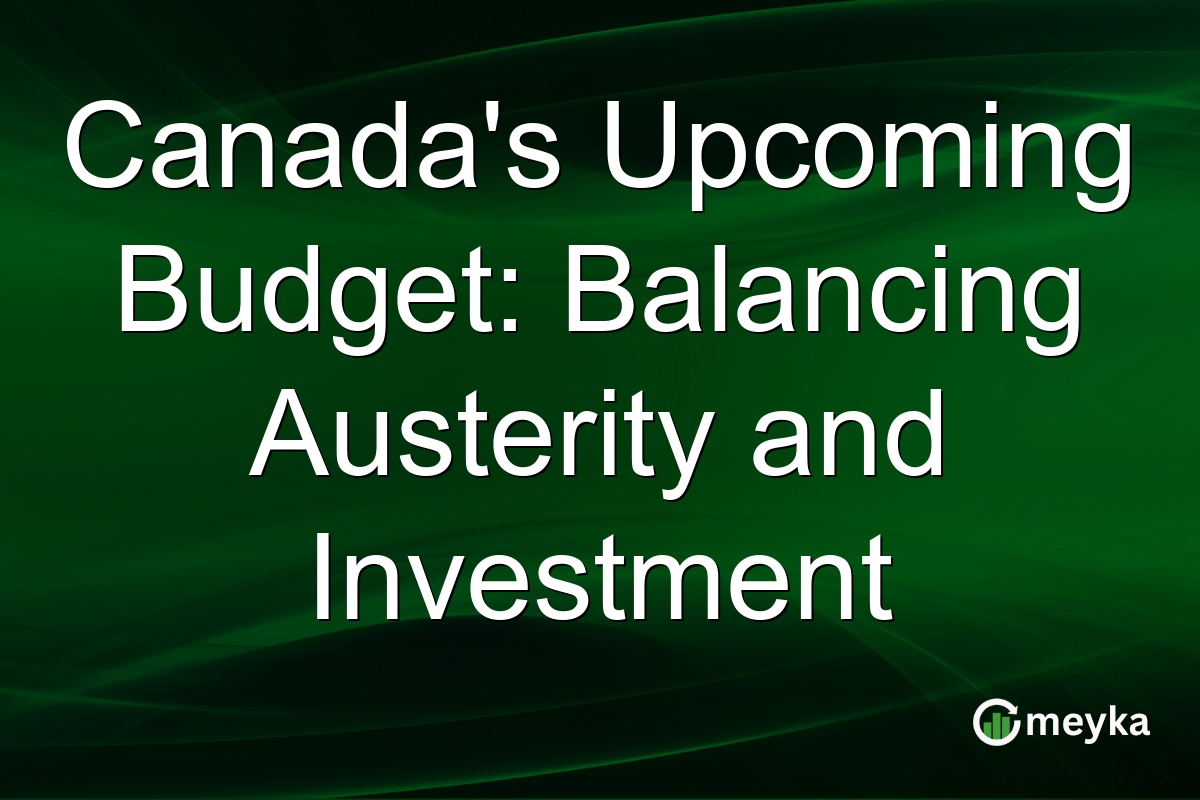Canada’s Upcoming Budget: Balancing Austerity and Investment
As we approach the announcement of Canada’s federal budget 2025, Prime Minister Mark Carney has outlined an intriguing approach that blends austerity with strategic investments. The budget aims to balance fiscal discipline through austerity measures while ensuring key projects continue to receive the necessary funding. This dual-focus strategy looks to stabilize Canada’s economy by managing government spending cuts without stifling growth.
Understanding Austerity Measures
Austerity measures have been a central talking point in discussions about Canada’s federal budget 2025. These measures generally involve reducing government spending to manage the national deficit and control debt. In a country where public spending has been historically high, this approach signifies a shift toward fiscal prudence. According to data, government spending cuts are anticipated to target non-essential services, with an estimated reduction of 5% in discretionary spending for the upcoming fiscal year. This strategic move hopes to address the ballooning deficit while redirecting funds to more impactful areas. By implementing such measures, the government aims to strengthen the economy’s foundation, ensuring long-term sustainability. Austerity doesn’t come without challenges. Cutting back on spending could lead to short-term economic slowdown and public resistance. However, the intention is to avoid unnecessary expenses, allowing vital projects to receive uninterrupted support. This careful balance anticipates increased public confidence and economic stability over time.
Strategic Investment Opportunities
While austerity measures are necessary, the Canada federal budget 2025 doesn’t ignore the importance of investment. The government plans to channel funds into sectors expected to yield high returns, such as technology, infrastructure, and green energy. Significant investments in technology aim to advance Canada’s position in a fast-evolving digital economy. Infrastructure projects, including transportation upgrades and smart city initiatives, are intended to generate job opportunities and modernize urban areas. Most notably, the government has earmarked approximately CAD 10 billion for green energy advancements, setting ambitious goals for renewable energy production by 2030. By choosing these strategic investments, Canada hopes to drive innovation, enhance competitiveness, and foster economic resilience. These planned expenditures align with both global trends and domestic needs, promising economic revitalization without disregarding fiscal responsibilities. This thoughtful allocation seeks to capitalize on sectors with growth potential, supporting economic development while ensuring environmental sustainability.
Balancing Fiscal Discipline with Growth
Balancing austerity with investment requires skillful navigation. The Canada federal budget 2025 strategy is rooted in ensuring rigorous control over unnecessary spending while fueling areas with transformative potential. Prime Minister Mark Carney emphasizes the need for a balanced approach. The link between austerity measures and resource allocation to key sectors is critical. Spending cuts are offset by growth-driven investments, allowing the government to maintain fiscal discipline without stifling economic growth. This balanced policy approach seeks to keep Canada competitive on the world stage. By maintaining a dual focus on reducing the deficit and investing wisely, the government aims to support sustainable development. Establishing clear priorities ensures that both fiscal health and economic innovation are achievable targets, leading to a more stable and prosperous future for Canada.
Potential Implications for Investors
For investors, the announcement of the Canada federal budget 2025 carries significant implications. Austerity measures may lead to tighter fiscal policies and potential short-term market volatility. Yet, strategic investments promise opportunities, particularly in technology, infrastructure, and renewable energy. According to a recent [Reuters report](https://www.reuters.com/world/americas/canadas-budget-will-focus-austerity-investment-says-pm-carney-2025-09-03), these sectors are expected to receive substantial funding, making them attractive options for future investments. Moreover, the balanced focus aims to enhance investor confidence, as controlled spending coupled with targeted investments creates a stable financial environment. Investors should consider these developments when forming strategies, as they present both challenges and opportunities. With the budget’s attention on fostering innovation and reducing deficit, it sets a promising path for economic stability and growth.
Final Thoughts
The Canada federal budget 2025 outlines a sophisticated strategy to address economic challenges through careful fiscal management. By balancing austerity with investments in key sectors, the government aims to secure long-term economic health. As we follow these developments, leveraging platforms like Meyka can provide valuable insights into these changing dynamics. Meyka’s real-time analysis tools will be essential for investors navigating this complex landscape, ensuring informed decision-making based on comprehensive data.
FAQs
The budget aims to balance austerity measures with strategic investments to manage government spending and stimulate economic growth through sectors like technology and green energy.
Austerity measures are expected to reduce unnecessary government spending by 5% in discretionary areas, aiming to control the deficit without compromising essential services.
Technology, infrastructure, and green energy are the key sectors for investment, as they promise high returns and align with global economic trends and environmental goals.
Disclaimer:
This is for information only, not financial advice. Always do your research.






